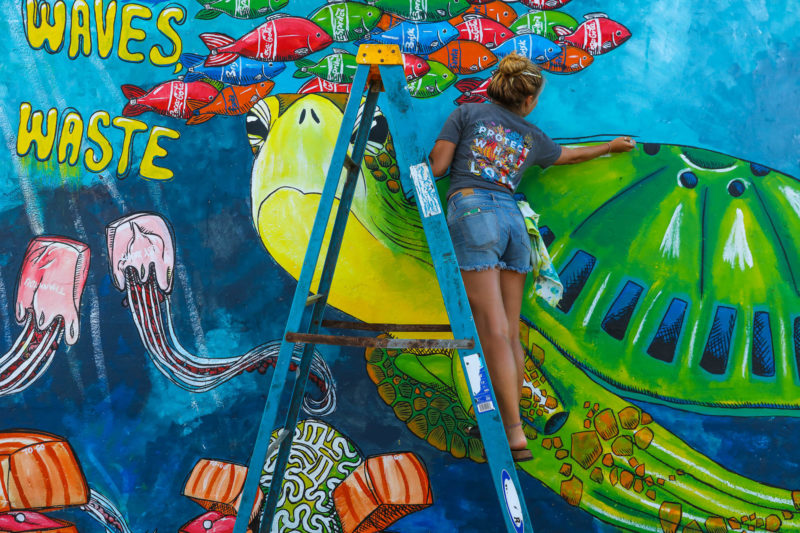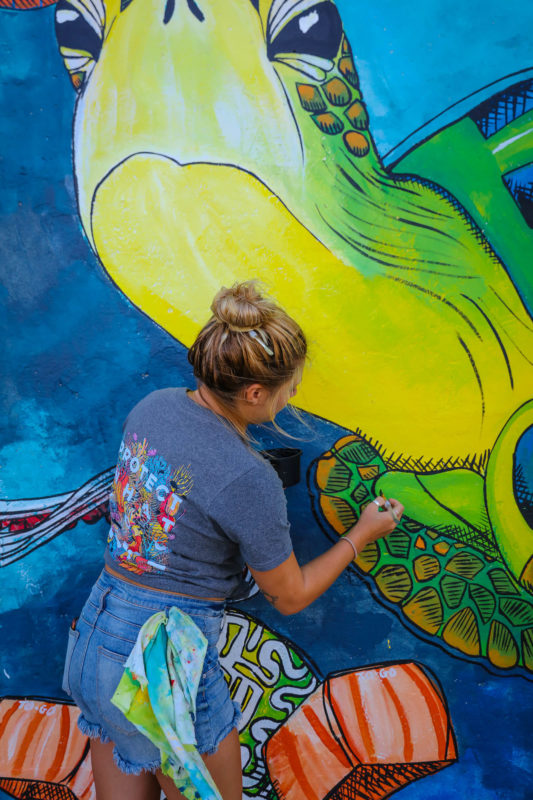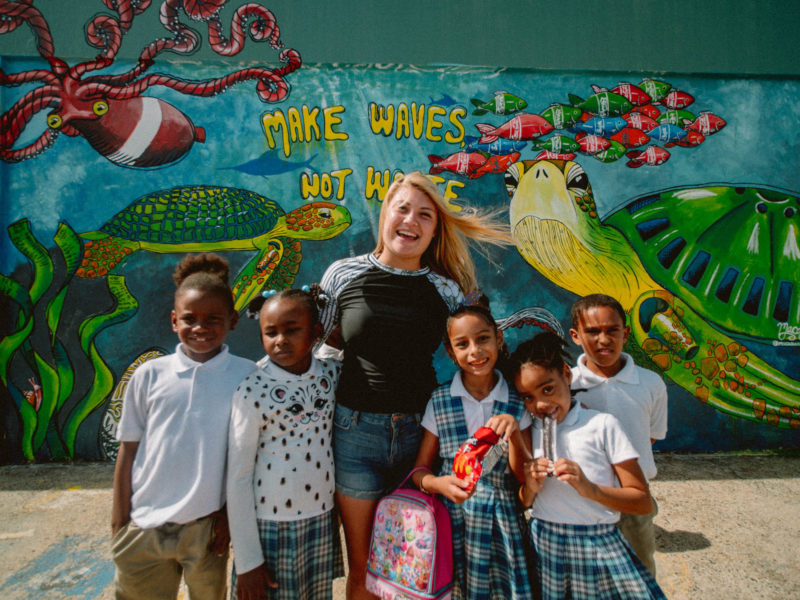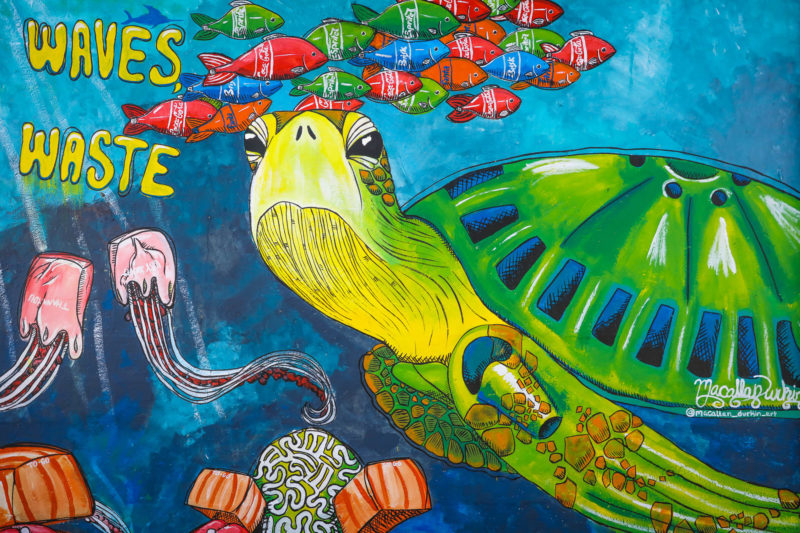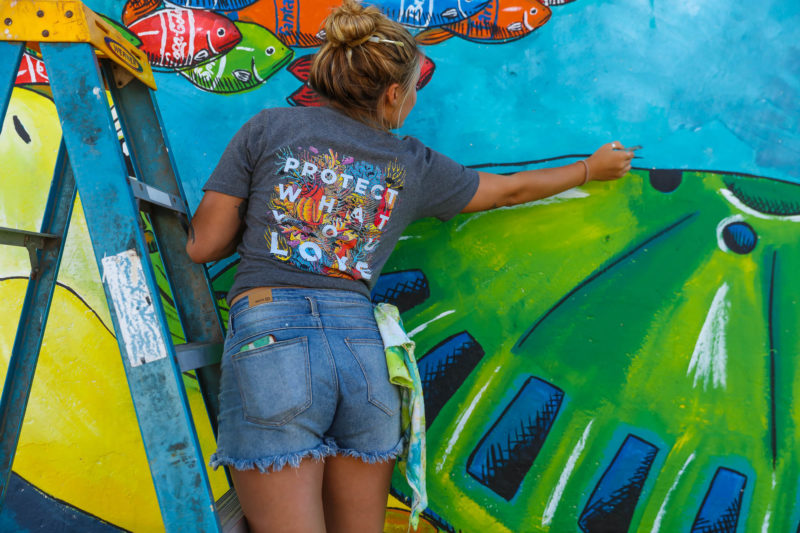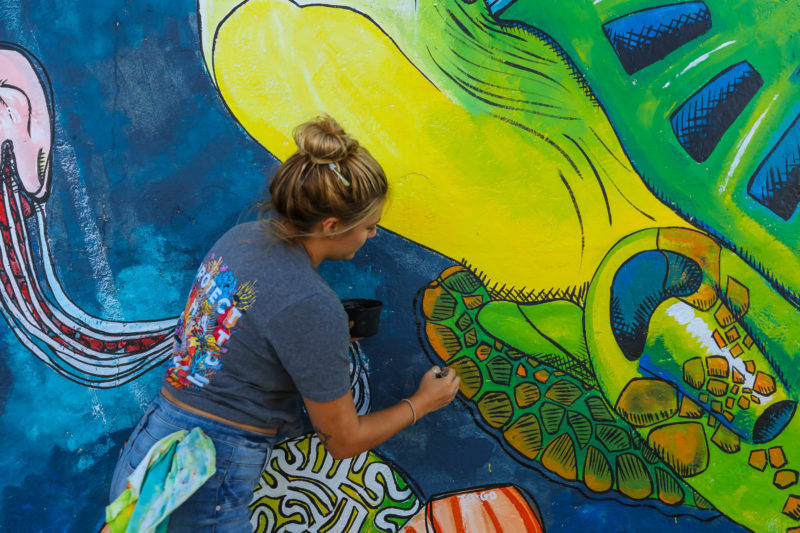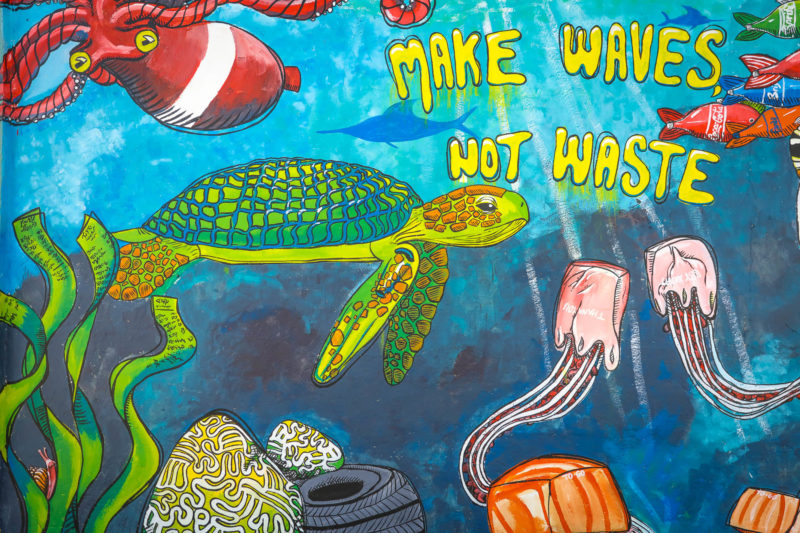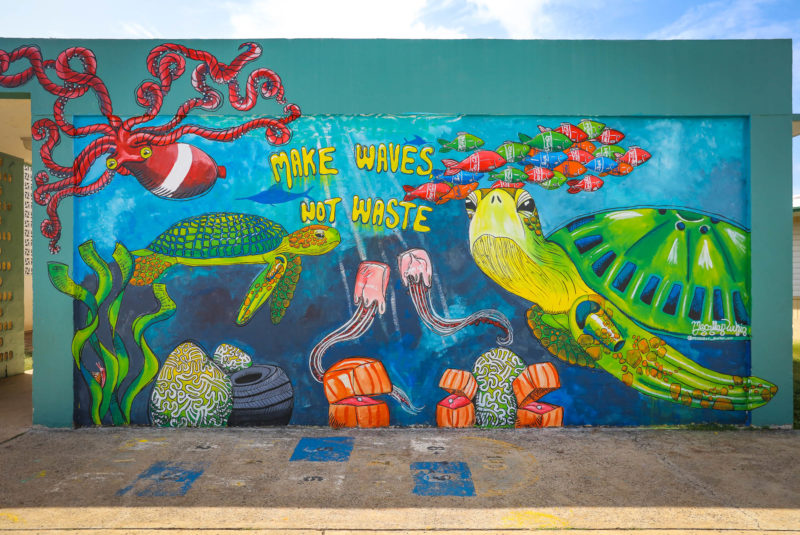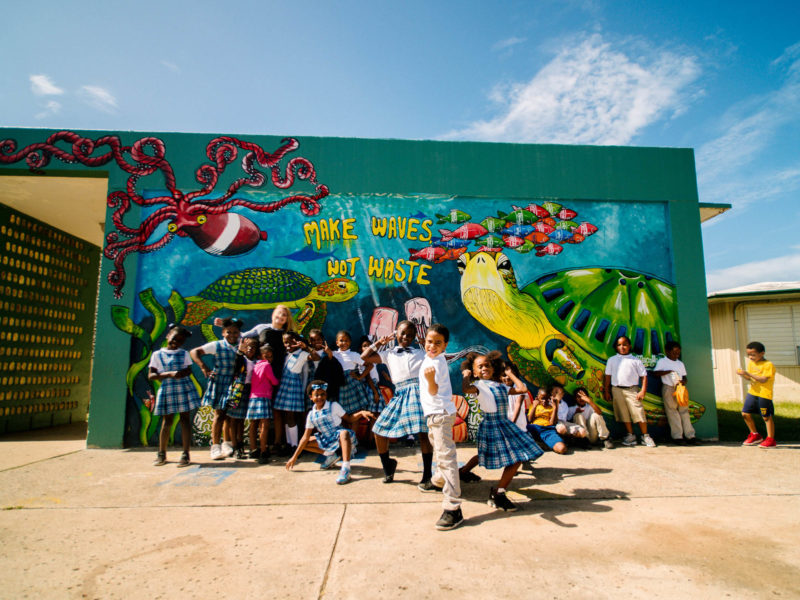Story Behind This Mural
Artist Statement
This mural addresses the excessive waste and litter humans produce and dispose of improperly. Because products end up in the ocean eventually, littering even on land can affect the oceans and those who inhabit them. Trash is broken apart and consumed by many marine species. This is either by microplastic food chain accumulation or by direct ingestion.Because of plastic pollution, endangered species are in an uphill battle for recovery, in addition to many other factors that go into the decline of floral and faunal populations in the ocean.
In the mural, many creatures in the ocean are shown, including the threatened species, the green sea turtle. The animals and plants of the ocean are represented here made up of trash. This illustrated the consumption of plastic waste and the effect it can have on marine species. Especially with plastic accumulation through the food chain. While one fish can ingest, say, three small pieces and still survive, a turtle will eat five of those fish and may not survive with fifteen small pieces of plastic in its system.
It’s time to make waves in conservation and renewable resources instead of making waste that fills Earth’s oceans and hurts the beautiful life under the sea.
The Focus
Plastic pollution and endangered speciesTake Action
Reduce your own plastic footprint by
- Using a reusable water bottle and avoiding drinks bottled in plastic
- Bringing your own bag, cup, utensils, straw, etc.
- Shopping in bulk, reducing packaging waste
- Choosing reusable and compostable goods over less sustainable materials
